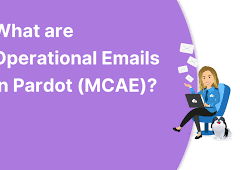Gain clarity on your email marketing objectives. What specific targets does your email program need to achieve? Is it aiming for a 5% increase in the subscriber base over the next six months? Or perhaps it’s focused on reducing unsubscribes or boosting clicks to conversions?
Understanding your email marketing objectives is akin to wielding a secret weapon for small businesses and B2B marketing, enabling them to cultivate and nurture robust relationships with their audience.
Every successful email marketing campaign owes its triumph to well-defined goals and objectives. Without these guiding stars, even the most compelling emails risk falling flat or veering off course. This article delves into the pivotal importance of establishing clear targets in email marketing and provides insights into crafting them for optimal impact.
Without a clear direction, you may inadvertently inundate your subscribers with emails solely focused on immediate conversions. Over-emailing without established objectives can lead to subscriber fatigue, ultimately tarnishing your customer file.
Email marketing objectives revolve around creating and disseminating valuable content that resonates with the audience. Whether it’s newsletters, product updates, helpful information, or industry insights, the aim is to deliver content that adds value to the recipient’s experience.
Understanding SMART Goals for Email Campaigns Your email campaign goals should be SMART:
Specific: Define precise goals like “Increase email open rates by 15%.” Measurable: Quantify your objectives, such as “Generate 500 new leads through email sign-ups.” Achievable: Ensure your goals are feasible with the resources at your disposal. Relevant: Align your goals with your overall marketing strategy and business objectives. Time-Bound: Set deadlines, for instance, “Achieve a 10% click-through rate within the next two months.”
Incorporating SMART email campaign goals allows you to plan activities effectively and allocate resources for success. Here are some examples of SMART email marketing goals:
Increase email open rates by 10% within the next six months. Generate $10,000 in revenue from email marketing within the next three months. Achieve a 5% conversion rate on our email marketing campaigns within the next year. Grow our email list by 500 subscribers within the next quarter. Improve customer engagement with our emails by sending at least two emails per month to our subscribers.
Regularly monitor your progress by reviewing the performance of your emails. Analyze aggregated data, campaign categories, and individual email sends to identify top-performing content. Incorporate successful strategies into other campaigns and compare your findings against benchmarks. Share insights with your broader organizational partners.
What is a KPI in Email Marketing? Key Performance Indicators (KPIs) are measures of various aspects of an email campaign’s performance. Tracking email KPIs provides insights into who opens your marketing emails and who forwards them to other contacts.
The Consequences of Ambiguous Objectives in Email Marketing In online communication, having clear objectives is paramount. Unclear goals are akin to embarking on a journey without a map, leading to significant challenges in email marketing. Here’s why:
Mixed-Up Marketing: Unclear goals can result in scattered marketing efforts, confusing or deterring potential customers. Wasting Time and Money: Lack of clarity may lead to misallocation of resources, causing missed opportunities and inefficiencies. Loss of Trust: Subscribers expect valuable content. Unclear goals may result in content that doesn’t meet expectations, eroding trust and credibility. In summary, while the pace of email marketing may be swift, unclear goals can precipitate numerous challenges. Clarity and focus are essential to mitigate these issues and drive better results.
Email marketing transcends mere message exchange; it represents a strategic journey laden with specific goals.
Inform: Provide subscribers with useful and pertinent information to establish trust and credibility. Attract: Expand the subscriber base by creating engaging campaigns and leveraging lead magnets. Engage: Foster active interaction with subscribers by delivering compelling content that prompts them to open, click, and respond. Guide: Lead subscribers through various stages of the customer journey, nurturing leads and facilitating conversions. Nurture: Build and maintain relationships with subscribers by understanding their needs and preferences, tailoring content to cultivate long-term loyalty. Convert: Prompt recipients to take specific actions, solidifying the impact of the email marketing strategy.
Each email serves as a narrative and an opportunity for businesses to connect with their audience. By setting clear goals, email marketing campaigns can be purposeful, effective, and aligned with overarching business objectives.













